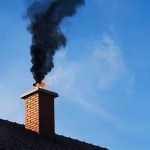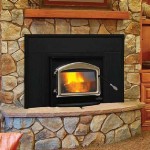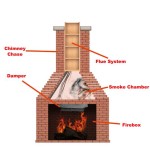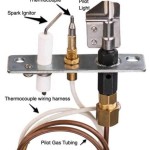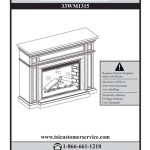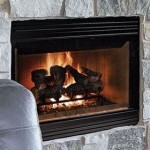Fireplace Gas Inserts: A Comprehensive Guide
Fireplace gas inserts offer a convenient and efficient alternative to traditional wood-burning fireplaces. These units are designed to fit directly into existing fireplace openings, transforming them into clean-burning, easily controlled heat sources. They provide the ambiance of a flickering flame without the mess and maintenance associated with wood burning. Understanding the nuances of gas inserts, including their benefits, types, installation, and maintenance, is crucial for making an informed decision.
A fireplace gas insert is essentially a self-contained heating appliance. It consists of a firebox, burner, and venting system, all encased within a decorative shell. The unit is installed inside an existing fireplace, utilizing the existing chimney (or a new vent liner) for exhaust. Unlike open wood-burning fireplaces, gas inserts are closed systems, offering improved energy efficiency and safety.
The operation of a gas insert is straightforward. Natural gas or propane fuels the burner, producing flames that are visible through a glass front. The heat generated is then circulated into the room, either through natural convection or with the assistance of a built-in fan. Many models include thermostatic controls, allowing for precise temperature regulation and automated operation.
Benefits of Choosing a Gas Insert
Gas inserts offer a myriad of benefits compared to traditional wood-burning fireplaces, making them a popular choice for homeowners seeking convenience, efficiency, and environmental responsibility.
Enhanced Energy Efficiency: Open fireplaces are notoriously inefficient, often drawing warm air out of the room while only radiating a small portion of the heat produced. Gas inserts, being closed systems, significantly improve energy efficiency. Many models boast efficiency ratings of 70% or higher, meaning a greater percentage of the fuel is converted into usable heat. This translates to lower heating bills and reduced energy consumption.
Convenience and Ease of Use: Unlike wood-burning fireplaces, gas inserts require minimal effort to operate. There is no need to chop, stack, or carry wood. Starting a fire is as simple as flipping a switch or pressing a button. Many models offer remote control operation, allowing for adjustments to flame height and temperature from the comfort of a chair. The automated operation, combined with thermostatic control, allows for consistent and predictable heating performance.
Reduced Maintenance: Gas inserts eliminate the mess associated with wood-burning fireplaces. There is no ash to clean up, no creosote buildup in the chimney, and no need for regular chimney sweeping. Periodic inspection and cleaning of the burner and venting system are recommended, but the overall maintenance requirements are significantly lower than those of a wood-burning fireplace.
Improved Safety: Open fireplaces pose several safety risks, including the potential for sparks to escape and ignite nearby materials, the risk of carbon monoxide poisoning from incomplete combustion, and the possibility of chimney fires due to creosote buildup. Gas inserts are designed with safety in mind. The closed system minimizes the risk of sparks and reduces the potential for carbon monoxide leaks. Many models include safety features such as oxygen depletion sensors, which automatically shut off the gas supply if oxygen levels in the room become too low.
Environmental Friendliness: Gas inserts burn cleaner than wood-burning fireplaces, producing fewer emissions and pollutants. Natural gas and propane are relatively clean-burning fuels, and gas inserts are designed to maximize combustion efficiency, further reducing emissions. By switching from a wood-burning fireplace to a gas insert, homeowners can reduce their carbon footprint and contribute to improved air quality.
Aesthetic Appeal: Gas inserts are available in a wide range of styles and finishes, allowing homeowners to customize the look of their fireplace to match their décor. From traditional log sets to contemporary glass media, there are numerous options to choose from. The realistic flame patterns and glowing embers create a warm and inviting ambiance that enhances the aesthetic appeal of the room.
Types of Gas Inserts
The selection of a gas insert requires consideration of various factors, including fuel type, venting options, and heating capacity. Different types cater to specific needs and installation requirements.
Natural Gas Inserts: These inserts are designed to operate on natural gas, which is typically supplied through a municipal gas line. Natural gas is a readily available and relatively inexpensive fuel source, making it a popular choice for homeowners who have access to a natural gas line. Natural gas inserts require a connection to the gas supply and proper venting to the outside.
Propane Inserts: Propane inserts are designed to operate on propane gas, which is stored in tanks. Propane is a versatile fuel source that can be used in areas where natural gas is not available. Propane inserts require a connection to a propane tank and proper venting to the outside. Propane tanks need to be refilled periodically, which adds to the ongoing cost of operation.
Direct Vent Inserts: Direct vent inserts utilize a sealed combustion system that draws air from outside the home for combustion and vents exhaust gases directly to the outside through a dedicated vent pipe. This type of venting system is considered the safest and most efficient, as it eliminates the risk of backdrafting and ensures that all combustion byproducts are safely expelled from the home. Direct vent inserts can be vented horizontally through a wall or vertically through the roof.
B-Vent Inserts: B-vent inserts utilize the existing chimney to vent exhaust gases to the outside. This type of venting system is less expensive to install than a direct vent system, as it does not require the installation of a dedicated vent pipe. However, B-vent inserts are less efficient than direct vent inserts and are more susceptible to backdrafting. It is crucial to ensure that the existing chimney is in good condition and properly sized for the gas insert.
Vent-Free Inserts: Vent-free gas inserts do not require a chimney or vent and are designed to burn cleanly enough that exhaust gases can be released directly into the room. While vent-free inserts offer installation flexibility, they are subject to strict regulations and may not be permitted in all jurisdictions. Vent-free inserts require careful monitoring and are not recommended for individuals with respiratory problems or sensitivities.
Heating Capacity: Gas inserts are rated by their heating capacity, measured in British thermal units (BTUs). The appropriate heating capacity for a gas insert depends on the size of the room to be heated and the climate in which the home is located. A larger room or a colder climate will require a gas insert with a higher BTU rating. Consulting with a qualified HVAC professional is recommended to determine the appropriate heating capacity for a specific application.
Installation and Maintenance
Proper installation and regular maintenance are essential for the safe and efficient operation of a gas insert. It is strongly recommended that a qualified professional perform the installation to ensure that the unit is properly connected to the gas supply and venting system.
Professional Installation: Installing a gas insert involves working with gas lines and venting systems, which can be dangerous if not done correctly. A qualified professional will have the necessary training and experience to ensure that the installation is performed safely and in accordance with local codes and regulations. The installer will also ensure that the gas insert is properly sized for the existing fireplace opening and that the venting system is compatible with the unit.
Gas Line Connection: Connecting the gas insert to the gas supply requires specialized tools and knowledge. A qualified professional will ensure that the gas line is properly connected and that there are no leaks. The gas pressure must be adjusted to the proper level, and the gas valve must be properly calibrated.
Venting System Installation: The venting system is crucial for the safe and efficient operation of a gas insert. A qualified professional will ensure that the venting system is properly installed and that it meets all applicable codes and regulations. The venting system must be properly sized for the gas insert, and it must be free of obstructions. Depending on the type of gas insert, the venting system may need to be installed through a wall or roof.
Regular Inspection and Cleaning: Regular inspection and cleaning of the gas insert are essential for maintaining its performance and safety. The burner should be inspected regularly for signs of wear or damage, and it should be cleaned as needed to remove any debris. The venting system should also be inspected regularly for obstructions, and it should be cleaned as needed to remove any buildup of soot or creosote. A qualified professional should perform annual inspections and cleaning.
Carbon Monoxide Detector: Installing a carbon monoxide detector near the gas insert is essential for safety. Carbon monoxide is a colorless, odorless gas that can be deadly. A carbon monoxide detector will alert occupants of the presence of carbon monoxide, allowing them to take appropriate action. The carbon monoxide detector should be tested regularly to ensure that it is functioning properly.
Professional Maintenance: A qualified professional should perform annual maintenance on the gas insert. The professional will inspect the unit for any signs of wear or damage, clean the burner and venting system, and test the safety features. Annual maintenance will help to ensure that the gas insert is operating safely and efficiently.
In conclusion, fireplace gas inserts provide a practical and aesthetically pleasing alternative to traditional wood-burning fireplaces. By considering the various types, benefits, and maintenance requirements, homeowners can make informed decisions and enjoy the warmth and ambiance of a fire with ease and peace of mind. Careful consideration of these factors will ensure optimal performance, safety, and longevity of the gas insert.

Gas Fireplace Inserts Napoleon Fireplaces

Rustic Gas Fireplace Inserts Kozy Heat

Gas Fireplace Insert Propane Regency Vermont Castings Napoleon

Gas Fireplace Inserts Lopi Stoves Made In Usa

Belmont Small Gas Insert
.aspx?strip=all)
Top 11 Gas Fireplace Insert Trends Of 2024

Majestic 30 Inch Ruby Direct Vent Gas Fireplace Insert With Blower

Mendota Luxury Gas Fireplaces Inserts

Short Pump Va Fireplaces Stoves Gas Inserts Wood

Enviro E Series Gas Or Propane Insert Fireplace Fireplaces By Cameron
Related Posts


